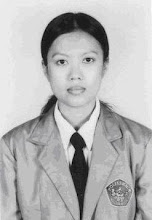 Mount Merapi, Gunung Merapi in Indonesian language, is a conical volcano located on the border between Central Java and Yogyakarta, Indonesia. This fire mountain remains one of the most active and dangerous volcano in the world. It can be seen from its name – Merapi from Javanese world Meru means mountain and Api means fire. The latest eruption
Mount Merapi, Gunung Merapi in Indonesian language, is a conical volcano located on the border between Central Java and Yogyakarta, Indonesia. This fire mountain remains one of the most active and dangerous volcano in the world. It can be seen from its name – Merapi from Javanese world Meru means mountain and Api means fire. The latest eruption
The local people call this heat cloud in Javanese Wedus Gembel (Wedus – a sh
 eep; gembel – thick curly hair), as it looked like. Usually the local inhabitants should flee from their villages only after seeing the emergence of the "curly sheep", as considered the real menace of the "Merapi Rulers". In 1997, thousand of Merapi villagers have been evacuated when it began spewing ash and lava.
eep; gembel – thick curly hair), as it looked like. Usually the local inhabitants should flee from their villages only after seeing the emergence of the "curly sheep", as considered the real menace of the "Merapi Rulers". In 1997, thousand of Merapi villagers have been evacuated when it began spewing ash and lava.The worst eruption was in 1930 which killed about 1300 people. People d
 id not know exactly how many thousand or even million times, Merapi has been erupted since its birth. In the 10th century, its ashes had buried totally a temple 15 km southward. Probably its unbearable activity had pushed eastward the Hindu Mataram kingdom from Prambanan, central Java to East Java in the 10th century. But Merapi does not act always as "a bad guy", most of the time "it is a good guy", handsomely gives tremendous fertility to the land, stands strongly guarding the nature.
id not know exactly how many thousand or even million times, Merapi has been erupted since its birth. In the 10th century, its ashes had buried totally a temple 15 km southward. Probably its unbearable activity had pushed eastward the Hindu Mataram kingdom from Prambanan, central Java to East Java in the 10th century. But Merapi does not act always as "a bad guy", most of the time "it is a good guy", handsomely gives tremendous fertility to the land, stands strongly guarding the nature.






